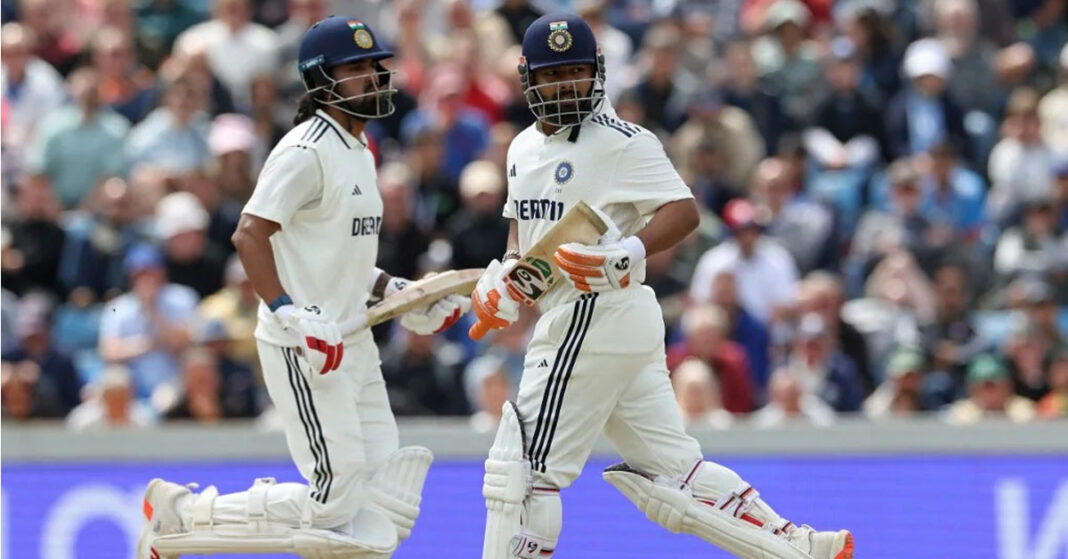India vs England Lord’s Test 2025: What Went Wrong for Team India?
Table of Contents
India suffered a narrow 22-run defeat against England in the third Test of the Anderson-Tendulkar Trophy at Lord’s. Chasing a modest target of 193 on the final day, the Indian team collapsed for 170, handing England a 2-1 lead in the five-match Test series. Despite strong bowling spells, India failed to capitalize on crucial moments due to recurring batting failures, costly extras, and a lack of support from the lower order. Here’s a deep dive into the five key reasons behind India’s disappointing loss at the iconic Lord’s Cricket Ground.
1. Overdependence on Rahul, Pant, and Jadeja Backfired
India’s top and middle-order batting failed to step up under pressure. While KL Rahul, Rishabh Pant, and Ravindra Jadeja showed individual brilliance, they lacked support from the rest of the lineup. Rahul scored 100 and 39 in both innings, Pant added 74 in the first innings, and Jadeja contributed with scores of 72 and 61. However, Shubman Gill, Yashasvi Jaiswal, and Karun Nair—who had earlier starred in the series—struggled badly at Lord’s.

Jaiswal and Gill, who had scored centuries earlier in the series, managed just 39 runs together in both innings. Karun Nair failed to reach even a fifty, scoring 40 and 16. The heavy reliance on Rahul, Pant, and Jadeja eventually left India exposed, especially when quick wickets fell and no one stood up to anchor the innings.
2. Lower-Order Batting Collapse in Both Innings
India’s lower order failed to deliver when it mattered most. In the first innings, after being comfortably placed at 376/6, the team lost its last four wickets for just 11 runs. This collapse meant India couldn’t take a first-innings lead despite England being bowled out for 387.

In the second innings, the batting collapse turned even worse. India needed just 193 to win but found itself 58/4 by stumps on Day 4. On Day 5, they lost three more wickets for just 24 runs in the morning session. Only Rahul (39) and Jadeja tried to put up resistance, but others—Jaiswal (0), Nair (14), Gill (6), Pant (9), and Nitish Reddy (13)—failed to handle the pressure, leading to India’s eventual downfall.
3. Pitch Conditions Deteriorated Dramatically
The Lord’s pitch turned increasingly difficult for batting as the match progressed. On Day 1, the average score per wicket was 63 runs, indicating a batting-friendly surface. But by Day 4, that average dropped to 18, and on the final day, it plummeted further to just 14. This sharp drop shows how the pitch became tougher, with variable bounce and increased seam movement.
England, having won the toss, gained a crucial advantage by batting first on a relatively stable pitch. India, in contrast, had to face the deteriorating conditions on Days 4 and 5, which contributed heavily to their collapse.
4. Jofra Archer’s Comeback Boosted England’s Attack
Making his Test return after nearly four years, Jofra Archer delivered a match-defining performance. He made an immediate impact by dismissing Yashasvi Jaiswal in his very first over of the match. Bowling 23.2 overs with six maidens in the first innings, Archer picked up two crucial wickets while maintaining an impressive economy rate of just 2.22.

In the second innings, Archer went up another gear. He removed Jaiswal again, then delivered knockout blows by dismissing Pant (bowled) and Washington Sundar (caught and bowled). Archer’s fiery spells tightened the screws on the Indian batting lineup and played a decisive role in England’s narrow victory.
5. India Conceded Too Many Extra Runs, While England Capitalized on Lower Order
Another major factor behind India’s defeat was the excessive number of extras conceded. India gave away 44 extra runs in the match (18 in the first innings and 26 in the second), including leg byes. When leg byes are factored in, the total jumps to a staggering 63. In comparison, England conceded just 30 extras.
Furthermore, England’s lower-order batters made key contributions. After being 271/7 in the first innings, Brydon Carse (56) and Jamie Smith (51) pushed the score past 350, helping England post a strong 387. In contrast, India’s tail failed to wag in either innings, underlining the stark difference between the two teams’ depth in batting.
What’s Next for Team India?
The fourth Test is scheduled to begin on July 23 at Manchester, and India must address its batting inconsistencies if it wants to bounce back in the series. With the scoreline now reading 2-1 in England’s favor, the upcoming matches are do-or-die for India to stay alive in the race for the Anderson-Tendulkar Trophy.
India vs England 2025, Lord’s Test match, India batting collapse, Jofra Archer comeback, KL Rahul performance, Rishabh Pant, Ravindra Jadeja, Anderson-Tendulkar Trophy, England vs India Test series, Manchester Test 2025, Lord’s pitch report, extras in cricket, lower-order batting failure










